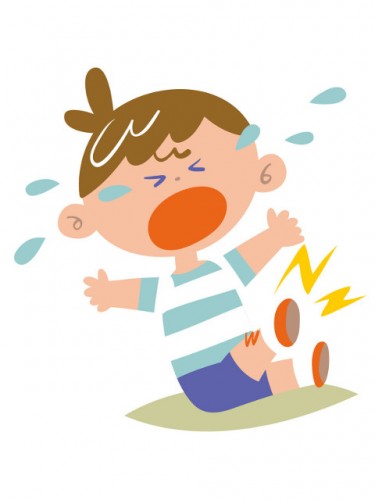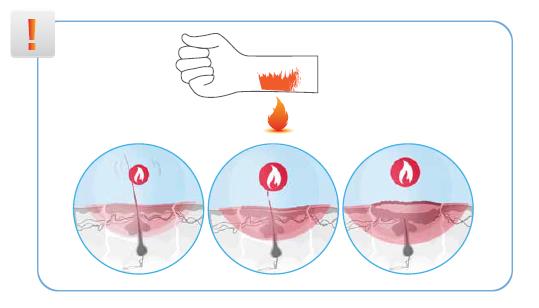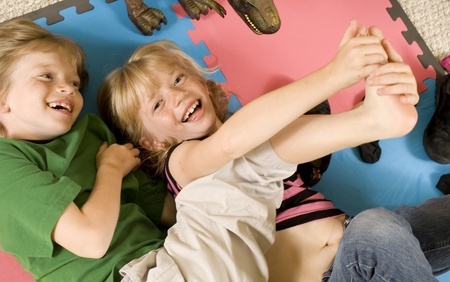What happens when your child has a bad fall? Dr Wong Chin Khoon from SBCC Baby & Child Clinic lists down the common accidents in children and the proper way to treat them.
Related Post: Basic First Aid and CPR For Your Baby
Common Accidents in Children
 1. Abrasions (Scrapes)
1. Abrasions (Scrapes)
- Wash abrasion with soap and water (use antiseptic solution if available)
- Allow to dry
- Cover with a sterile non-stick plaster, bandage or dressing
2. Bruises
- Apply cold compresses to fresh bruises for the first 15 to 20 minutes.
- Look out for possible underlying fracture if the fall or knock is significant:
- Swelling
- Pain
- Tingling sensation
- Inability to move
3. Burns and Scalds
No blisters:
- Place burned or scalded extremity in cold water or cover the area with cold, wet cloths until pain stops (at least 15 minutes).
- Do not apply toothpaste
With blisters:
- Same as for no blisters. Do not break blisters.
- Seek medical attention if the affected area is significant or in important areas (e.g. face, ear, joints or genital area). If in doubt, seek medical attention anyway!
Related Post: All You Need To Know About Burn Injuries
4. Cuts
- For small wounds, immediately put it under running water to flush out any dirt or contaminant if possible. Then, apply direct pressure onto the wound with a gauze pad for 10-15 minutes. (Use gloves if possible.)
- If bleeding continues or is serious, apply a large pressure dressing over the original gauze pad, elevate the wound and call 995 immediately.
5. Fall (head injury)
Check for any swelling over the scalp. Apply cold compress (e.g. ice pack) over the area of impact even when there is no swelling yet for 15-20 minutes.
Call 995 or seek medical attention if the child is:
- Vomiting
- Unconscious or drowsy
- Behaving abnormally (“not his usual self”)
- Complaining of severe or persistent headache
- Oozing blood or fluid from ears or nose
- Twitching or convulsing
- Unable to move any body part
If there is any open wound, seek medical attention immediately. If the wound is bleeding, apply direct pressure (see above).
Related Post: Head Injuries In Children
6. Electric shock
If the child is still connected to the electrical circuit, or lying near the wire or electrical power, disconnect or remove the child from the circuit using a non-conductive instrument e.g. wooden plank or plastic rod.
If the child is conscious: check for wound and seek medical attention immediately
If the child is unconscious, check if the child is breathing. If not, perform CPR and call 995 immediately.
7. Fall (resulting in tooth injury)
Tooth (Broken – i.e. partial)
- Rinse dirt from the injured area with warm water.
- Place cold compresses over the face in the area of the injury.
- Locate and save any tooth fragments.
- Call the parent to pick up and take the child and tooth fragments to the dentist IMMEDIATELY.
Tooth (Knocked Out – i.e. complete)
- Find the tooth. Handle tooth by the smooth, white portion (crown), not by the root.
- Rinse the tooth with water, but DO NOT clean it.
- Place tooth in a cup of milk or water.
Call the parent to pick up and take the child and tooth to the dentist IMMEDIATELY. (Time is critical, especially for permanent tooth.)
Related Post: Common Questions Parents Ask About Tooth Decay

8. Suspected Sprained Ankle
Immediately treat the injury with compression and ice to reduce bleeding, swelling, and pain. Apply compression with a snug, elastic bandage. While some mild sprains can be cared for at home, most injuries to ligaments need to be evaluated by the doctor.
Home therapy is commonly known as the RICE Therapy:
- Rest – immobilize the injured part
- Ice (or cold pack)
- Compression – pressure bandage
- Elevation – to reduce swelling
Breathlessness and high fever: Seek medical attention immediately! (I think it should not be dealt here under mishaps and medical attention should be sought immediately)
Dr Wong Chin Khoon
Paediatrician
SBCC Baby & Child Clinic
This article was first published in The New Age Parents e-magazine
If you find this article useful, do click Like and Share at the bottom of the post, thank you.
Like what you see here? Get parenting tips and stories straight to your inbox! Join our mailing list here


























































